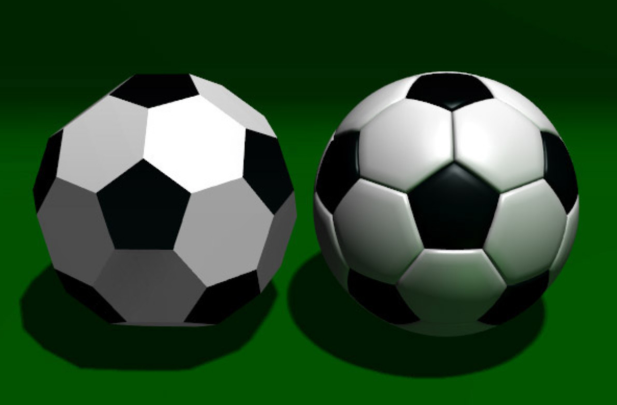Sports balls play a very important role in almost every game we enjoy today. From football and basketball to tennis and volleyball, each sport has its own special ball designed for speed, bounce, and control. The design of sports balls is not random; it is created carefully to match the rules and needs of each sport.
When people talk about sports, most of them think about athletes, stadiums, or fans. But without sports balls, many games would not even exist. They are the heart of the game, helping athletes show their skills and giving fans moments of excitement. In this article, we will explore the history, types, materials, and importance of sports balls across the world.
A Short History of Sports Balls
Sports balls have been used for thousands of years. In ancient times, people made balls from animal skins, feathers, or even bladders of animals. These early versions were simple but allowed people to enjoy competitive games.
The oldest known sports ball was found in China, where a game called cuju used a leather ball stuffed with hair. In Mesoamerica, ancient civilizations played ball games using rubber balls, which were considered sacred. Over time, technology improved, and sports balls became stronger, lighter, and more suitable for professional competitions.
Today, modern sports balls are designed with advanced materials like synthetic leather, rubber, and even microfibers. This makes them durable, consistent in performance, and suitable for both indoor and outdoor play.
Types of Sports Balls
There are many types of sports balls, each designed for a particular sport. Let’s look at the most popular ones:
1. Football (Soccer Ball)
The soccer ball is the most recognized sports ball in the world. It is usually made of 32 panels stitched together, though modern designs use fewer panels for better aerodynamics. FIFA-approved balls have to follow strict size and weight rules to keep the game fair.
2. Basketball
Basketballs are larger and designed to bounce well on wooden courts. They are made with a rubber bladder inside and an outer layer of leather or synthetic material. The grip is important so players can dribble, pass, and shoot with accuracy.
3. Tennis Ball
Tennis balls are small, light, and covered with fuzzy felt. They are pressurized inside to make them bounce consistently. Their bright yellow color makes them easy to see during fast-paced matches.
4. Volleyball
Volleyballs are lighter than soccer balls and slightly smaller. They are designed to be hit with the hands and arms without causing injury. Indoor volleyballs are smoother, while beach volleyballs are a bit heavier and water-resistant.
5. Baseball
A baseball is small, hard, and stitched with red thread. It is made of a cork core wrapped with yarn and covered with leather. Its size and weight allow pitchers to throw different types of pitches, adding variety to the game.
6. American Football
The American football is oval-shaped, also known as a prolate spheroid. This unique design allows long and accurate throws. It has leather laces that help players grip it better.
7. Cricket Ball
Cricket balls are hard and heavy, made of cork inside and leather outside. The seam stitching in the middle helps bowlers swing or spin the ball, making the game exciting.
8. Golf Ball
Golf balls are small but highly engineered. The dimples on their surface reduce air resistance, allowing them to fly farther. They are made of layers for better control and power.
9. Rugby Ball
Similar to American football, the rugby ball is oval but slightly larger. It is designed to be carried, passed, and kicked during the game.
10. Table Tennis Ball
Also known as a ping pong ball, this is a very light and hollow plastic ball. It is small but essential for the fast-paced sport of table tennis.
Materials Used in Sports Balls
The materials of sports balls affect their durability and performance. Common materials include:
- Leather – Traditionally used in soccer, basketball, and cricket balls. Provides durability and good grip.
- Synthetic Leather – Lighter and cheaper than natural leather, common in modern sports balls.
- Rubber – Used in tennis balls, volleyballs, and playground balls for bounce.
- Cork and Yarn – Found in baseballs and cricket balls for a solid core.
- Plastic – Lightweight balls like ping pong and practice balls use plastic.
Advanced sports balls also include layers of foam, microfibers, and special coatings to improve aerodynamics and consistency.
How Sports Balls Are Made
Making a sports ball involves several steps:
- Designing the Panels – Panels of leather or synthetic material are cut into specific shapes.
- Stitching or Bonding – The panels are stitched together or thermally bonded.
- Inserting the Bladder – A rubber bladder is placed inside to hold air.
- Shaping and Testing – The ball is inflated, tested for roundness, weight, and bounce.
- Quality Control – Professional balls go through strict tests before being approved for use in games.
Importance of Sports Balls in Games
Sports balls are not just equipment; they are symbols of the game. Without them, the excitement of scoring goals, hitting a six, or making a slam dunk would not exist. The ball is the center of attention for both players and fans.
They also affect fairness in sports. If a ball is not designed properly, it can change the outcome of a match. That’s why official organizations like FIFA, NBA, ICC, and ITF set strict rules for ball design.
Innovations in Sports Balls
Technology has made sports balls smarter and better. Some modern balls include sensors that track speed, spin, and movement. For example:
- Smart Soccer Balls – Used for training, these balls can measure kicks and passes.
- Eco-Friendly Balls – Made from recycled or biodegradable materials.
- High-Tech Basketballs – Some training balls connect with apps to improve shooting skills.
These innovations show how sports balls continue to evolve with technology.
Caring for Sports Balls
To make sports balls last longer, proper care is important:
- Store them in a cool, dry place.
- Do not overinflate, as it may damage the bladder.
- Clean them regularly with a soft cloth.
- Avoid playing on rough surfaces if the ball is designed for indoor use.
Proper maintenance ensures consistent performance and saves money on replacements.
Conclusion
Sports balls may look simple, but they are deeply connected to the history and excitement of games worldwide. From the soccer fields of Europe to the cricket grounds of Asia, from basketball courts in the USA to tennis courts at Wimbledon, every ball has a story to tell.
They bring people together, create unforgettable moments, and make sports what they are today. Whether you are a casual player or a professional athlete, the right sports ball can make your game more enjoyable and successful.
FAQs
Q1. What is the most popular sports ball in the world?
The soccer ball is the most popular because football (soccer) is the most played sport globally.
Q2. Why do tennis balls have fuzz?
The fuzzy felt helps control the bounce and slows the ball slightly in the air.
Q3. How long does a basketball last?
A good basketball can last 1–3 years depending on use and care.

